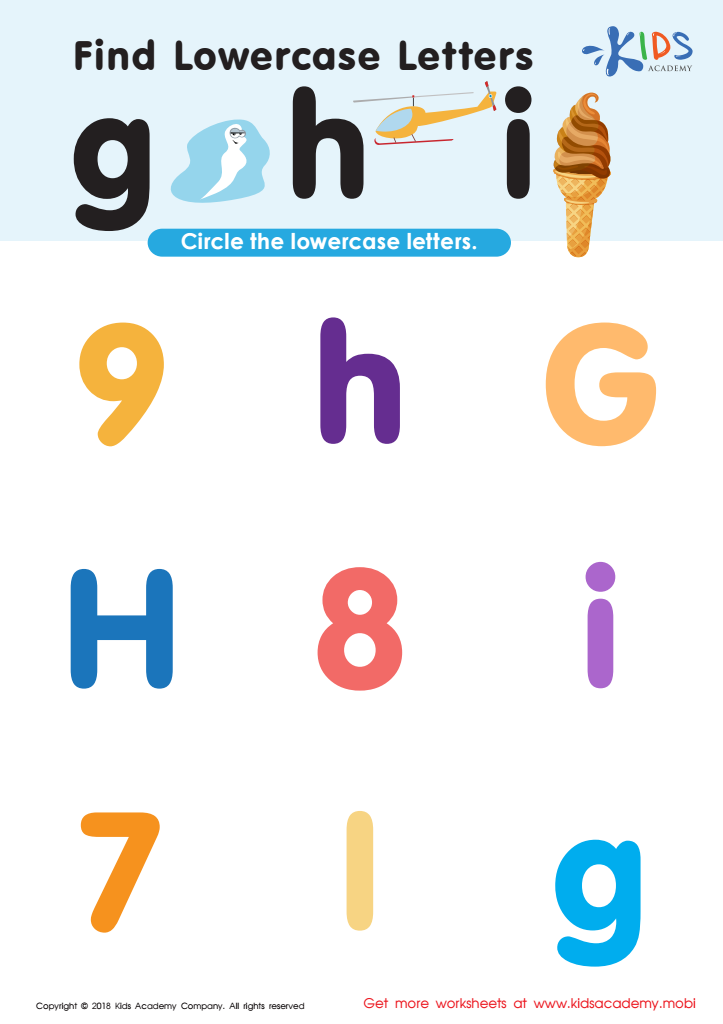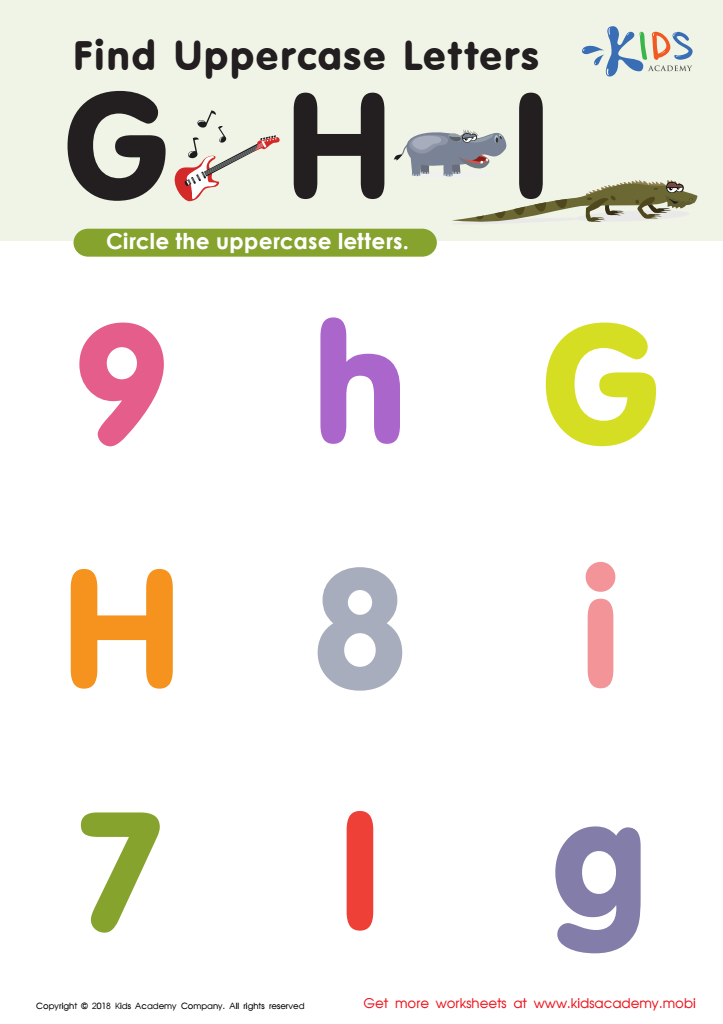Visual discrimination Normal Upper & Lowercase Letters Worksheets for Ages 6-8
4 filtered results
-
From - To
Enhance your child's visual discrimination skills with our engaging Upper and Lowercase Letters Worksheets, designed specifically for ages 6-8. These worksheets provide fun and interactive activities that help children easily distinguish between similar letters, improving their reading and writing proficiency. With colorful illustrations and diverse exercises, your child will enjoy practicing letter recognition while strengthening their visual processing abilities. Our user-friendly format makes it easy for both parents and teachers to incorporate these worksheets into daily learning routines. Start nurturing essential literacy skills while making learning a joyful experience with our expertly crafted visual discrimination resources! Download your worksheets today!


Find Lowercase Letters g h i Worksheet


Find Uppercase Letters G, H, and I Worksheet


Find Lowercase Letters y z Worksheet


Find Uppercase Letters V, W, X Worksheet
Visual discrimination, the ability to distinguish between different letters and their forms, is crucial for children ages 6-8 as they develop foundational reading and writing skills. At this age, children begin to recognize and manipulate both uppercase and lowercase letters, which serve as building blocks for their literacy journey. Parents and teachers should care about visual discrimination for several reasons.
Firstly, strong visual discrimination skills enhance a child's ability to read smoothly and fluently. When children can easily differentiate between letters like 'b' and 'd' or 'p' and 'q', they are less likely to make errors while reading or writing, fostering confidence and enjoyment in these activities.
Secondly, good visual discrimination supports spelling proficiency, as children need to identify and correctly reproduce letters in various contexts. This skill also aids in handwriting, where visual clarity between similar-looking letters prevents confusion.
Lastly, reinforcing visual discrimination can aid in overall cognitive development. It engages children in critical thinking and problem-solving as they learn to identify differences and similarities among letters. By focusing on these early literacy skills, parents and teachers set a solid foundation for academic success and lifelong learning.
 Assign to My Students
Assign to My Students












